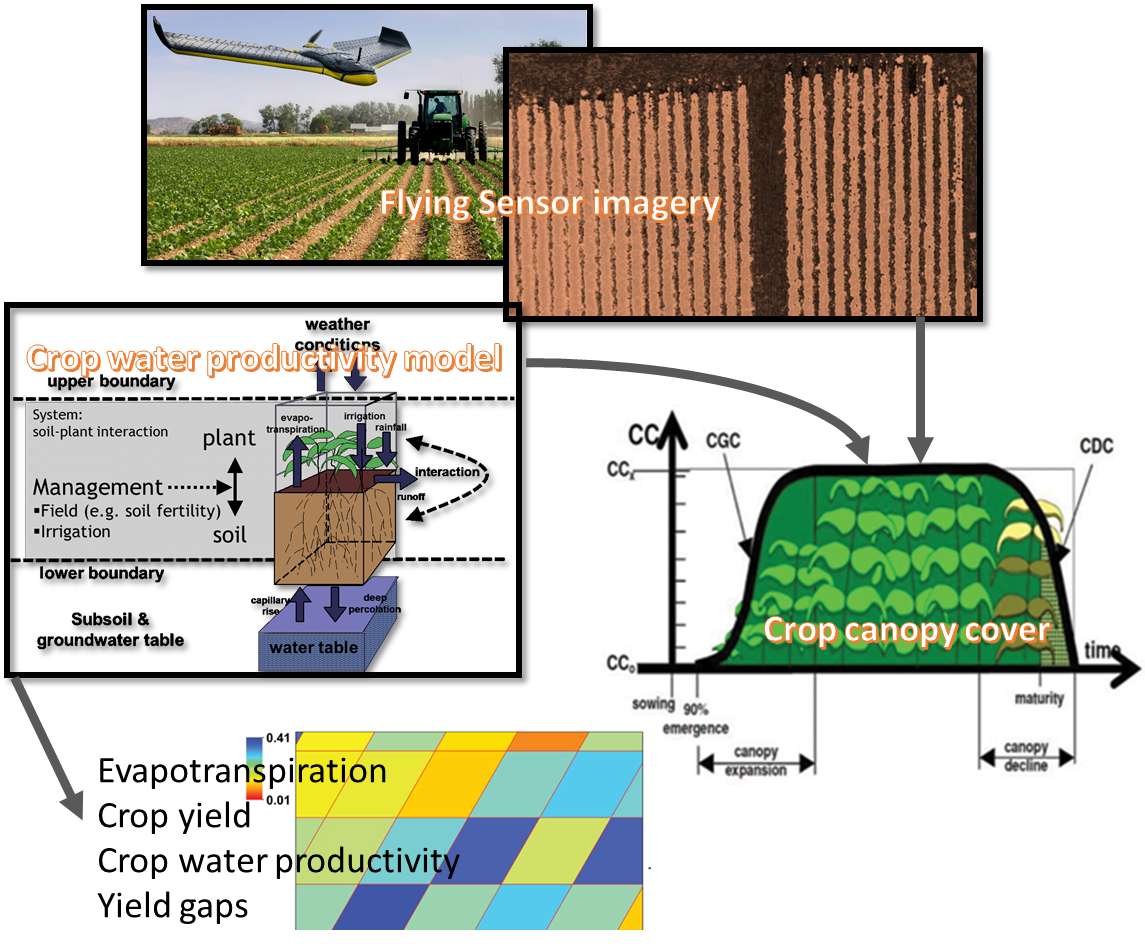Concept
Many crop water simulation models, sometimes also referred to as agro-hydrological models, are currently available. The model concepts, governing equations and underlying theory of these models are often very divergent.
Some simulation codes use principally empirical equations to describe the processes, while other models include more complex mechanistic equations to capture a certain crop or soil water response. However, most models contain a mixture of empirical and mechanistic concepts.
For the crop growth components of the models, the main distinction that can be made in terms of their underlying equations, is whether they are
- radiation (or light) use efficiency based,
- photosynthesis based, or
- water use efficiency based.
Depending on the analysis required, research question and data availability, a choice needs to be made on the right model to choose.
The concepts behind modeling of soil water dynamics range from the use of a simple bucket-filling model to those that solve more complex algorithms based on the Richards´ equations. The impact of water stress on crop growth is often described by either (i) a tipping bucket concept through f.e. stress response functions or can be (ii) Richards´ potential driven.
FutureWater employs crop water simulation models in various contexts and applications. The model of choice depends on each project and analysis required. Commonly used models are for example: SWAP (Soil, Water, Atmosphere and Plant), the crop module of the Soil Water Assessment Tool, (SWAT) and FAO´s AquaCrop.
FutureWater applications
Crop water models and remote sensing
Crop water simulation models provide predictions on crop development and growth. Remote sensing can be used to measure crop development by means of indices as NDVI, Leaf Area Index (LAI) and Canopy Cover.
FutureWater uses remote sensing information on crop status to improve crop water simulation models, leading to more accurate and realistic results. Satellite-based information can be used, which has the advantage that it can provide long and consistent timeseries. But also, Flying Sensor-based remote sensing can provide useful high-resolution estimates of crop development.
For example, Canopy Cover can be extracted from this imagery and be used in combination with crop water productivity models to assess yields and water productivity.
Crop water models and climate change impacts
Crop water simulation models can be used to assess climate change impacts on food security. To assess climate change impacts on crop production, a combination of factors need to be considered, principally: temperature-dependent stresses, water availability changes and CO2 changes affecting the biomass assimilation.
Typically this type of analysis require a large number of siulations to be performed over various dimensions: time horizons, regions, crop types, soil types, among others. FutureWater has performed this type of analysis for different agro-climatic regions in the world and different scales of interest (regional to global). FutureWater presents outputs of this type of analysis in a digestible way to decision-makers.


